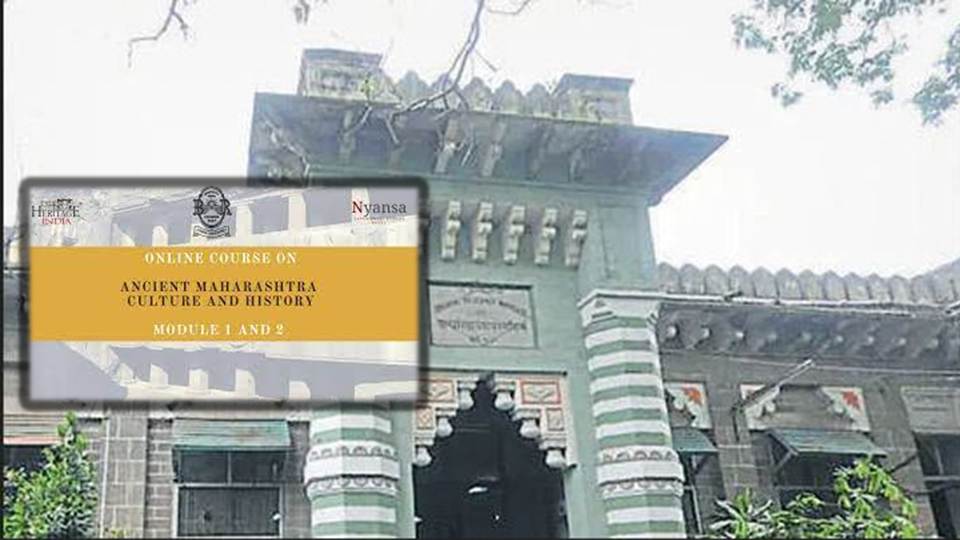Bhandarkar Oriental Research Institute: If we are asked about the biggest challenge in the resurrection of Indic texts, then most of us will complain about their availability. Surprisingly their availability is not a problem. Making them free of commentaries suited to current political compass is the problem. But, there is always a light at the end of the tunnel. In the Indian context, it is the think tank that created the most accurate version of Vyasa’s Mahabharat.
Unadulterated Indic courses available online
Pune based Bhandarkar Oriental Research Institute (BORI) has begun offering online courses on Indic civilisational texts. It has been launched on ‘Bharat Vidya’, the online platform of BORI. The course covers vast swathes of topics including religion, literature, philosophy, governance and policy-making, astronomy, mathematics, sciences, medicine, art, architecture, history and culture.
These topics are available under 5 paid courses namely Ved Vidya, Darshanas, Digital Sanskrit Learning, Introduction to Mahabharata, Kalidas and Bhasha, and Fundamentals of Archaeology. Sixth course, namely the spoken Sanskrit course, is free.
Describing how the pandemic led to the evolution of project, Chinmay Bhandari, coordinator, Digital Initiatives said, “In 2019, we started our digital library, and to complement it we thought of creating a parallel learning platform where people with diverse interests can explore the resources available with the institute and interact with each other. Unfortunately, the COVID-19 pandemic intervened around the same time.”
Public response drive this project
During the pandemic, people had started to realise the value of hedonistic consumerism. They started to look for something spiritual. This is where BORI’s decision to launch a course on Indian heritage came handy for it. Good response from the public encouraged BORI to launch an online portal, www.bharatvidya.in.
600 people opened their accounts while 100 enrolled for the courses on Indian history. Organisers are surprised about the demography of subscribers. Most of the subscribers came from the age group of 25 to 40. These people are mostly working professionals, trainers, coaches, engineers, professors and doctors.
Bhandarkar Oriental Research Institute (BORI) has established legacy
There are lots of factors driving the good response from the public. Foremost of which is the vast swathe of information available with the institute. It has 28,000 manuscripts and 1.53 lakh rare books. The massive collection is the result of 105 years of hard work.
The institute was originally established in 1917. It is a public trust registered under Act XXI of 1860. Every year, Bhandarkar Oriental Research Institute (BORI) publishes a journal called Annals of the Bhandarkar Oriental Research Institute.
BORI is one of the rare institutions respected among its peers. Its Rigveda manuscripts (preserved here) have been included in UNESCO’s Memory of the World Register. Probably, UNESCO’s trust factor was driven by Innumerable numbers of scholars citing BORI in their academic pieces.
One of the most famous scholars referring to Bhandarkar Oriental Research Institute (BORI) was Bharat Ratna awardee, Pt. Pandurang Vaman Kane. He was a notable Indologist and Sanskrit Scholar. The institute also collaborates with Deccan College Pune, which is currently on its way to produce the biggest Dictionary in the world. No wonder, it is a Sanskrit language dictionary.
Most accurate version of Vyasa’s Mahabharat
The biggest fame attached to Bhandarkar Oriental Research Institute (BORI) is the presentation of its accurate version of Vyasa’s Mahabharata. The project to present authentic and adulterated Mahabharat was an arduous task and involved back-breaking work. The project got kicked off on 1st April 1919.
The emphasis on quality can be witnessed from the fact that it took 6 years to appoint its general editor, V.S. Sukthankar, a renowned scholar to hand this responsibility. He fulfilled his duty till his last breath in 1943. Later S.K. Belvalkar and P. L. Vaidya also donned this hat.
Finally Sarvepalli Radhakrishnan, Indian President of the time, announced the completion of the publication on 22nd September 1966. In 48 years and nearly six months, Scholars went through 1259 manuscripts to bring out the most accurate version of Mahabharat. This edition is in 19 volumes and constitutes text of the 18 parvas of the Mahabharata consisting of more than 89,000 verses.
Leaving people to interpret texts is the key
The main reason it took nearly 50 years to accurately present Vyasa’s Mahabharat is because chances of texts getting tinkered are much higher. You see, India has gone through numerous socio-economic changes during the last thousands of years. During these times, almost every scholar, whether small or big, interpreted texts to appease his/her own support base.
The decentralised interpretation has led to loss of original meaning. Though, some part of that is necessary, interpreting texts in a way which is antithetical to the motive of the original author is pure cheating and in many ways dishonesty.
BORI has always emphasised on bringing original versions of any text. That is why its online courses do not present any narrative. Narrative framework is left for the readers and listeners to attach to the text. Various learners will debate on interpretative meaning of texts while the original version will act as a guiding preamble. Tell me a better example of democratisation of education than this.
Support TFI:
Support us to strengthen the ‘Right’ ideology of cultural nationalism by purchasing the best quality garments from TFI-STORE.COM
